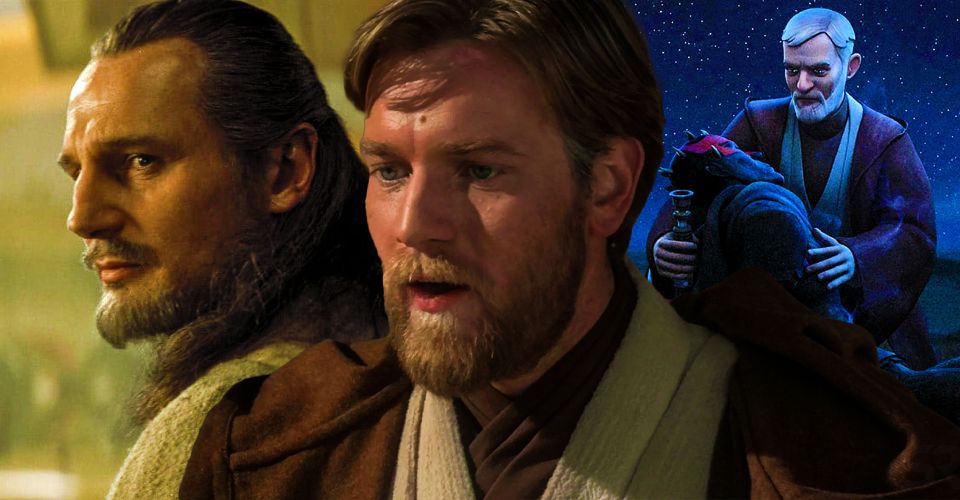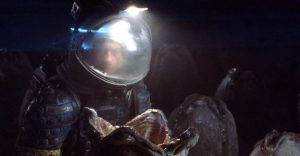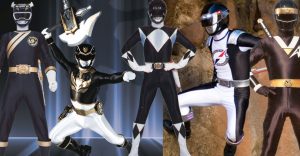Star Wars’ Prequel Deaths Highlight The Tragedy Of Obi-Wan

There are three major prequel deaths in the Star Wars galaxy that highlight the tragedy of Jedi Master Obi-Wan Kenobi. As one of the most important Jedi in the entire Skywalker saga, it’s remarkable to think about how much pain and loss Obi-Wan Kenobi suffered, while still choosing to operate in the light. Additionally, these three deaths were incredibly defining for his character (his master, the woman he loved, and his longtime nemesis). Furthermore, they all died in his arms and imparted tragic final words that Obi-Wan would carry with him throughout the rest of his Jedi path.
In Star Wars: Episode I – The Phantom Menace, Obi-Wan was the apprentice of Jedi Master Qui-Gon Jinn. Despite Qui-Gon’s preoccupations with prophecy and the Living and Cosmic Force, the pair built up a strong relationship by the beginning of the Skywalker saga, and Qui-Gon put his full faith in Obi-Wan’s abilities to pass the Jedi Trials after they discovered the existence of young Anakin Skywalker on Tatooine, whom Qui-Gon believed to be the prophesied Chosen One. Unfortunately, Qui-Gon was slain by Darth Maul during the Battle of Naboo. After Obi-Wan managed to defeat Maul (but not permanently destroy him, as he somehow survived), his master lay dying in his arms, and Qui-Gon made Obi-Wan promise to train Anakin in his stead. Kenobi would go on to honor this request, and the relationship he would form with Anakin would hugely define his entire journey going forward.
The next major death in Obi-Wan’s life was during the Star Wars: The Clone Wars, after Darth Maul resurfaced with a burning desire for vengeance against Kenobi. Reuniting with his brother Savage Opress and taking control of the terrorist group the Mandalorian Death Watch, Maul began building a massive crime syndicate to overtake Mandalore. Eventually, Maul took the throne and held Duchess Satine Kryze hostage, the woman Obi-Wan would have left the Jedi Order for had she asked him to. Maul murdered Satine right in front of Kenobi, and she likewise died in his arms, telling him to remember that she always loved him, highlighting the life he could have had apart from the Jedi and the opportunity that was now forever lost with her death.

Darth Maul and Obi-Wan would go on to have another confrontation, ending with Maul’s death in the Jedi’s arms. The final confrontation occurred in the years just before the first Star Wars film, shown in Star Wars: Rebels. Seeking to finally get revenge on Kenobi, Maul tracked the Jedi Master down to his self-imposed exile on Tatooine. Meeting him face-to-face once more, Maul sensed that Obi-Wan was protecting Luke Skywalker, and the two warriors of the light and dark had their final duel where Obi-Wan emerged the victor. However, Maul died in Obi-Wan’s arms just like those he had killed in the past. This was because Obi-Wan had grown to pity Maul over the years, especially upon learning that Maul had never had a choice to embrace the dark side. It was the only thing he had ever known thanks to the Nightsisters of Dathomir and Darth Sidious himself, who rejected Maul during the Clone Wars. As Maul died, he asked Obi-Wan if the boy was the Chosen One. When Obi-Wan confirmed that he (Luke) was, Maul responded with his last breath that he would avenge them both, seemingly confirming their shared belief that Luke Skywalker would be the “new hope” that would restore the galaxy and defeat Sidious’ Empire.
Whether it was Qui-Gon, Satine, or Maul, each of their deaths served to be extremely significant and defining points in Obi-Wan’s life, highlighting the tragic nature of his journey. However, they also serve as a testament to his resolve and determination to follow the will of the Force no matter what. Kenobi’s own apprentice Anakin fell to the dark side due to his fear that his love Padmé would die. Though it didn’t end with another death for Kenobi, the climactic confrontation between the two on Mustafar at the end of the Clone Wars was another pivotal and defining moment of loss for the Jedi. Their confrontation would lead to a duel, in the end forcing Obi-Wan to fight Anakin and leave him dismembered and burning by a lake of fire. One might argue that Obi-Wan had much more cause to fall to the dark side himself, because of the life of tragedy he had endured. Instead, Obi-Wan Kenobi became one of the most important Jedi of all time. As he once said to Maul: “It takes strength to resist the dark side, only the weak embrace it.”
- Rogue Squadron (2023)Release date: Dec 22, 2023
About The Author


















